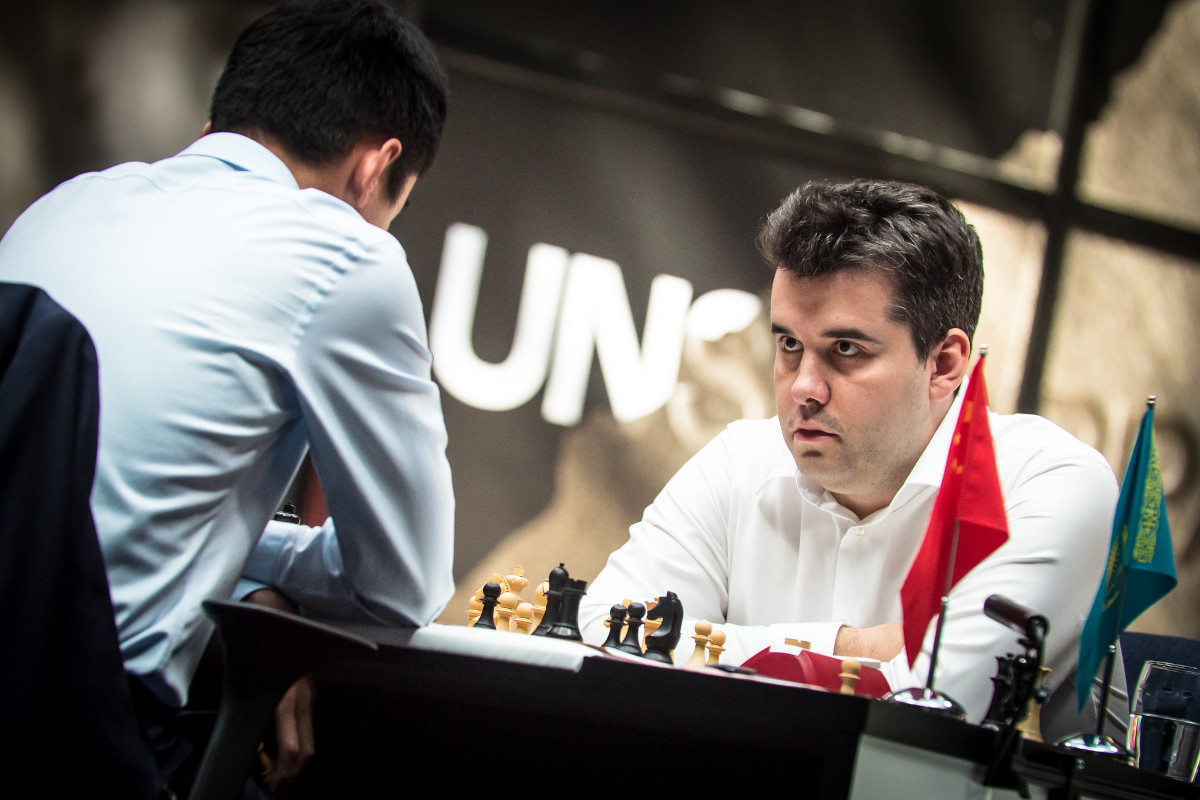


Find expert commentary — video and game annotations — by well-known coach and author IM Robert Ris at the end of the article.
The exciting World Championship match facing Ian Nepomniachtchi and Ding Liren is coming to a close. With the score tied and one more classical game to go, it is now impossible to talk about one of the contenders being the favourite. Perhaps Ding could be given a slight edge since he will get the white pieces on Saturday, but recent World Championship history says otherwise. As Ding himself pointed out:
I remember the match between Topalov and Anand, where Topalov had white in the last game, but he lost.
Indeed, since the reunification match in 2006, only Vishy Anand managed to win the last game of a confrontation in similar circumstances (Magnus Carlsen also won the final game in 2021, but by then he already had a large advantage). In the match Ding alluded to, in 2010, Anand and Veselin Topalov entered game 12 — the last classical encounter — with a tied score. Anand won with black to keep the title.
If we continue our exploration of similar scenarios, we can look a bit further back, to the 2004 match in Brissago, where Vladimir Kramnik won on demand to tie the score with Peter Leko and keep the title. Back then, the defending champion got to keep the crown in case of a tie. Coincidentally, that match was also played to the best of 14 (the length of the match would be later shortened to 12 games, until 2021, when a 14-game format was restored).
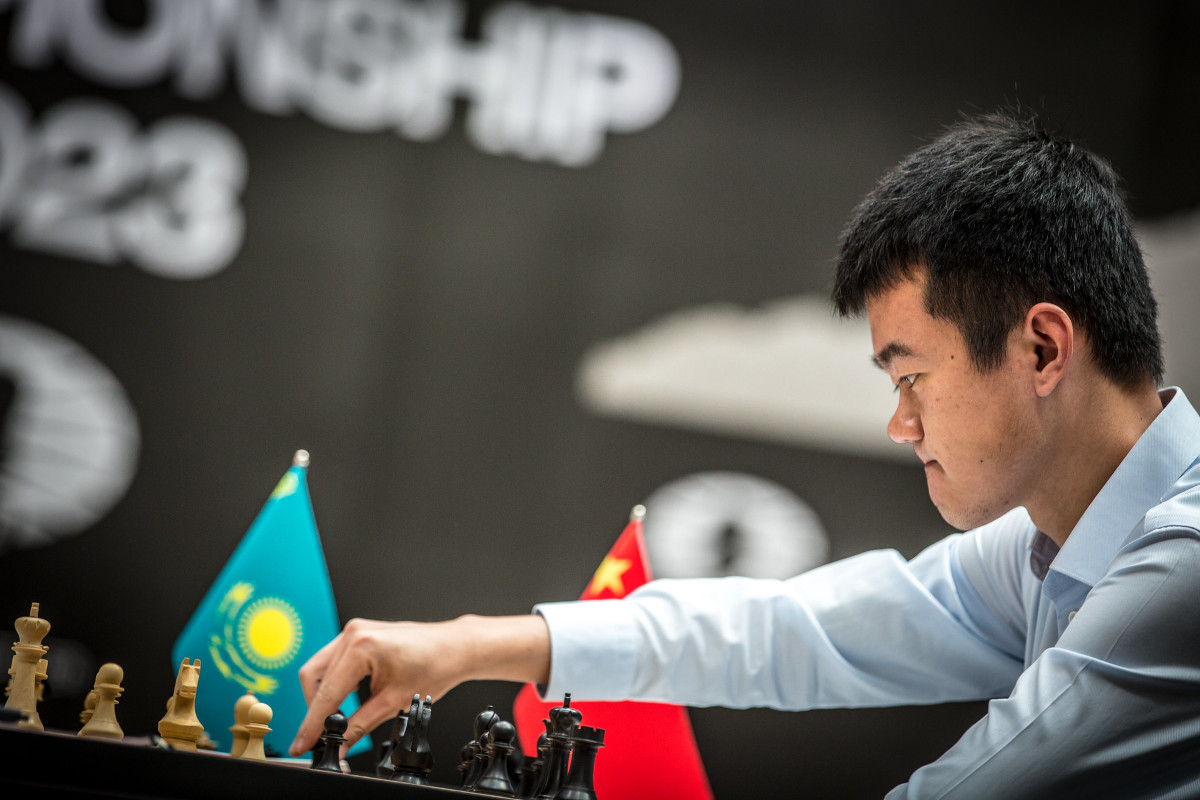
Ding Liren | Photo: FIDE / Anna Shtourman
If we choose not to ascribe the status of favourite based on who is playing white, we could go by momentum. From that point of view, Ding might also be regarded as a slight favourite, since his chaotic victory in game 12 had a visible emotional impact on Nepo. However, as Anand noted after Thursday’s draw, Nepo’s ability to escape what had been a difficult position with white will surely feel like a relief:
Ding did have a very good position in this game, but he can be happy he equalised the match yesterday, and Nepo can be relieved today!
Enjoyment for chess fans is all but guaranteed from this point on. If the contenders play it safe in game 14, a rapid tiebreaker will follow on Sunday.
A new world champion will be crowned this weekend, no matter what.
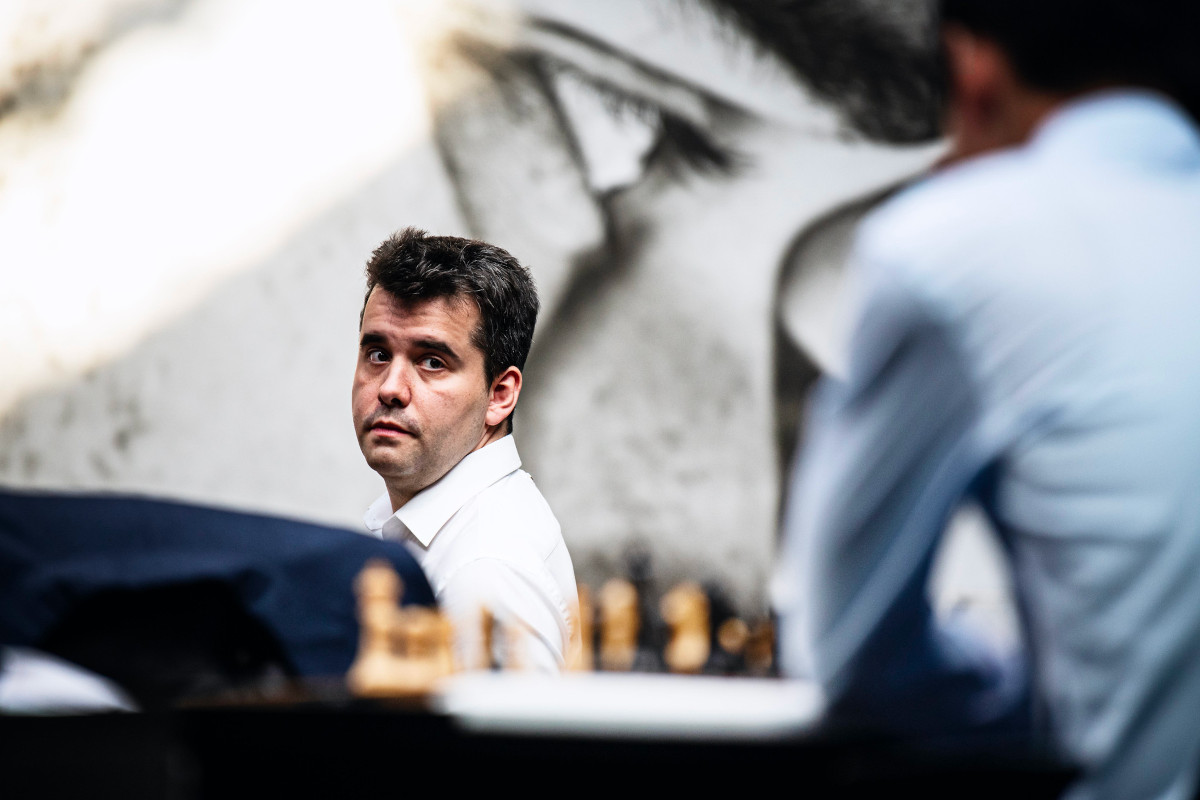
Fatigue plays a key role in the final stages of the match | Photo: FIDE / Stev Bonhage
Nepo played 1.e4 in his last game with white. Out of his seven outings from that side of the board, only once, in game 3, did he opt for 1.d4 — the Russian did not lose a single classical game with white in the match. Another strategic Ruy Lopez appeared on the board, and it was Nepo who deviated from elite-GM theory on move 10.
In the middlegame, however, the imprecise 18.f3 allowed Ding to play a desirable pawn break soon after.
Getting the chance to play 19...d5 was very welcomed by Black. As Ding explained:
It’s a kind of Sicilian Defence. After Black successfully plays d5, they don’t have problems at all. They can also hope for some advantage after that.
Things looked great for the Chinese grandmaster, especially given Nepo’s collapse in the previous game. But Nepo was up to the (defensive) task, as he found the very precise 23.Qd4 soon after, equalizing.
Ding gave up an exchange and found himself in a slightly inferior endgame later on. He did get to place his knight on a formidable outpost, though.
Nepo spent some time looking for potential winning chances after this point, but he soon decided that he did not have enough to get much out of the position. The draw was agreed after Black played his 39th move.
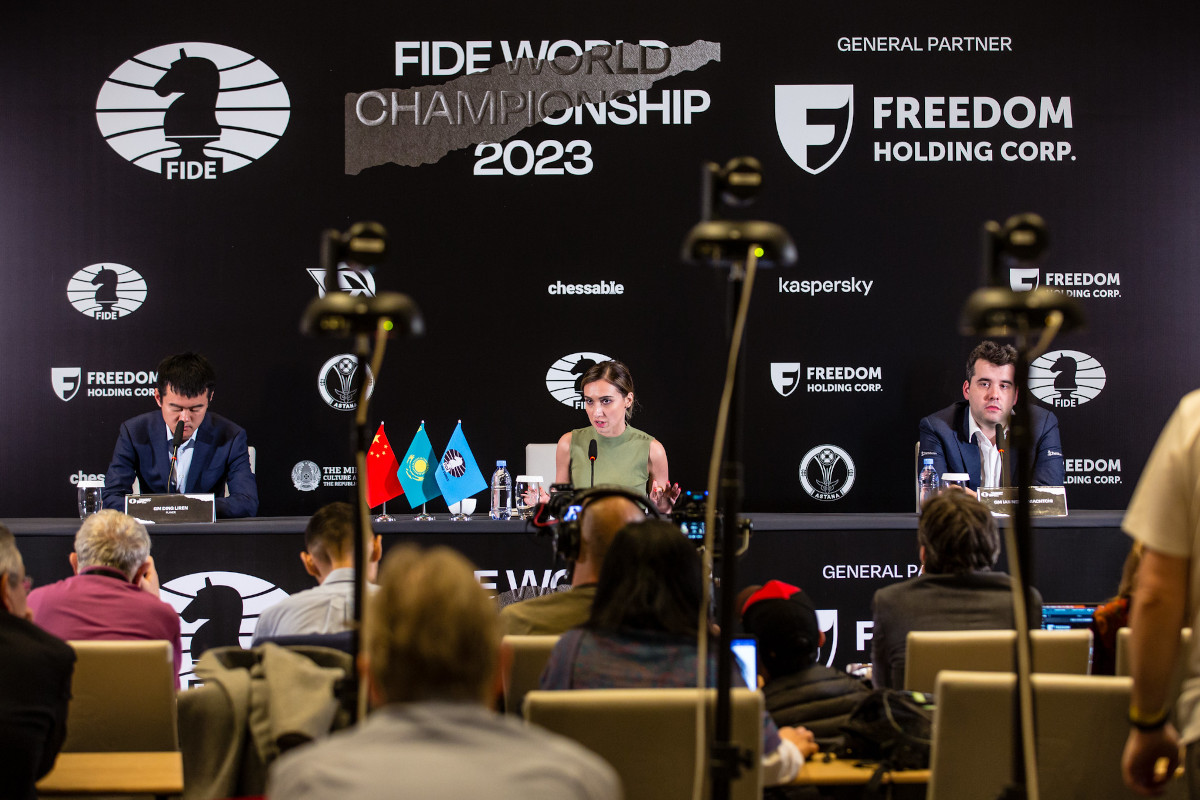
Georgian WGM Keti Tsatsalashvili is in charge of the press conferences in Astana | Photo: FIDE / Anna Shtourman
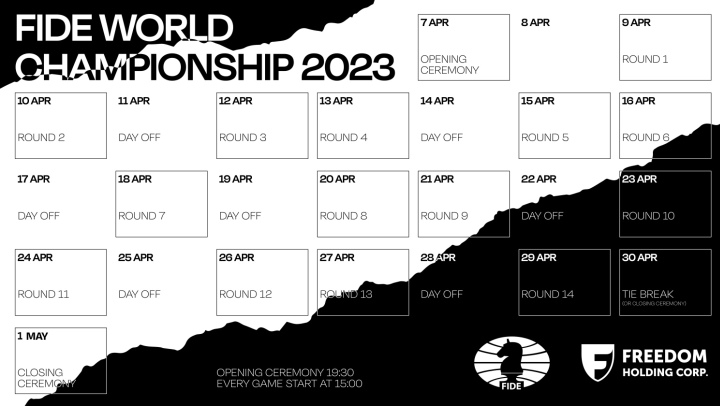
| Advertising |